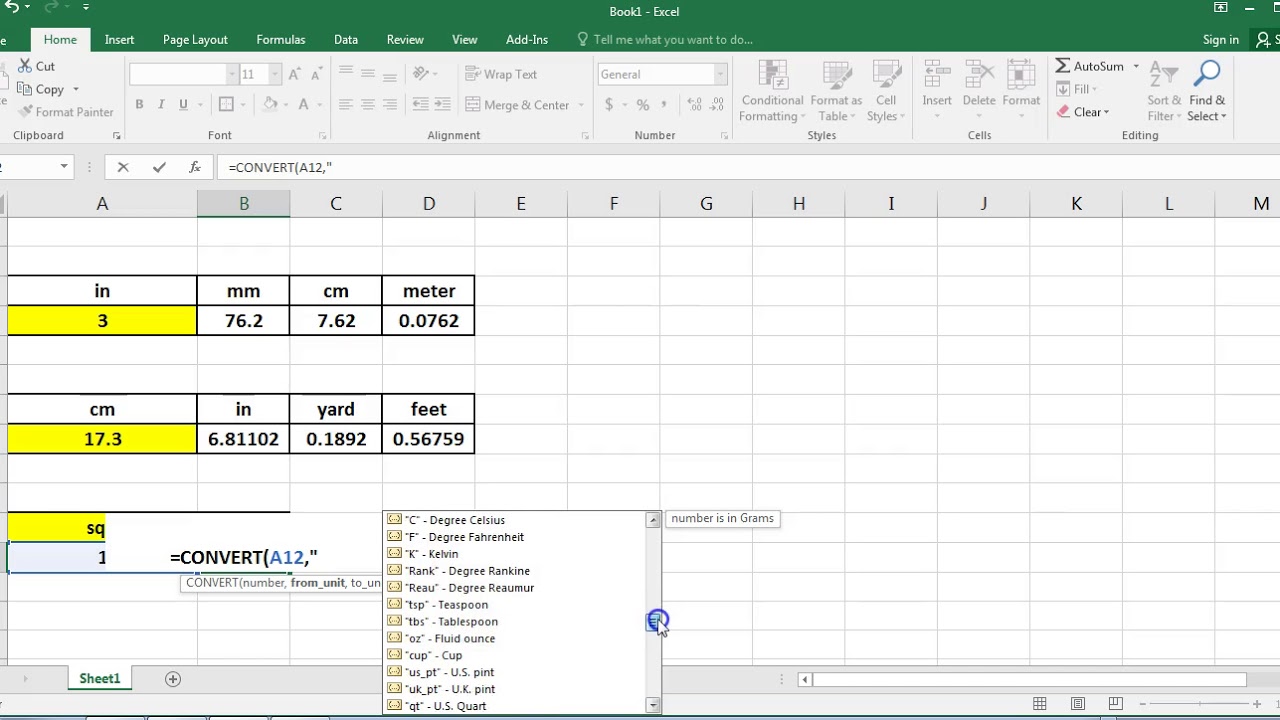5 Ways to Set Default Unit in Excel Easily

In the world of data management, Excel stands as one of the most popular tools for organizing, analyzing, and manipulating data. A common task users often encounter is setting default units for measurements to ensure consistency in their spreadsheets. Whether you're dealing with weights, distances, or any other units, setting a default unit can save you time and reduce errors. This comprehensive guide will walk you through 5 easy ways to set default units in Excel, ensuring your data entry is efficient and accurate.
1. Using Cell Formatting

One of the simplest ways to set a default unit in Excel is by altering the cell’s format. Here’s how:
- Select the cells where you want to apply the default unit.
- Right-click and choose “Format Cells” or press Ctrl+1.
- Go to the “Number” tab, choose “Custom” in the Category list.
- In the “Type” box, enter your desired unit after the numerical format. For example, for meters, you might enter “0.00 m”.
- Click “OK”.
🛠️ Note: This method applies a visual format to your data, but it does not alter the actual data. The unit is just for display purposes.
2. Customizing Number Formats with Excel Macros

For users comfortable with VBA (Visual Basic for Applications), setting up macros can automate the process of adding units:
- Open the VBA editor by pressing Alt+F11.
- Insert a new module (Insert > Module).
- Write or paste a macro that defines the number format with your default unit:
Sub SetDefaultUnit()
Selection.NumberFormat = “0.00 “kg””
End Sub
- Run this macro when you need to apply the unit.
This VBA script will set the selected cells’ format to include the unit “kg” after the number.
💡 Note: Macros can be shared with colleagues or run automatically with certain events in Excel, enhancing productivity.
3. Data Validation for Consistency

Another approach to ensure consistency in units is by using data validation:
- Select the cells where you want to enforce the unit.
- Go to “Data” > “Data Validation”.
- In the “Settings” tab, set “Allow” to “Custom”.
- In the formula box, you could enter a formula like “=RIGHT(A1,2)=“kg”” assuming your unit is always at the end of the cell content.
- Choose how to handle errors and warnings.
Data validation helps in maintaining data integrity by preventing input that does not match your criteria.
4. Using Conditional Formatting

If you want to visually enforce units without altering cell content, conditional formatting is ideal:
- Select your range of cells.
- Go to “Home” > “Conditional Formatting” > “New Rule”.
- Choose “Use a formula to determine which cells to format.”
- Enter a formula like “=RIGHT(A1,2)=“kg”“.
- Set the formatting options to highlight cells that meet this condition.
This method allows for easy identification of units, ensuring users are aware of the expected format.
5. Template Sheets

Lastly, creating template sheets with pre-set units can streamline data entry:
- Set up a new Excel workbook with your desired units pre-formatted into cells.
- Save this workbook as a template.
- When starting new projects, open this template, and all your units are ready to go.
Template sheets reduce the initial setup time, especially for repetitive data entry tasks.
Ensuring consistent units in Excel is crucial for clarity and accuracy in data representation. By employing these five methods, you can tailor your Excel experience to meet your project's needs, ensuring that all users adhere to the same standards for measurement. Whether through direct cell formatting, automated macros, data validation, conditional formatting, or templates, these strategies offer various approaches to simplify your work. Remember, selecting the right method depends on your specific use case, the frequency of unit changes, and your comfort level with Excel's features. With these tools at your disposal, setting default units in Excel can become a straightforward task, enhancing both productivity and data integrity.
What happens if I need to change the default unit later?

+
If you need to change the default unit later, you can simply follow the same steps to apply a new format or adjust your macro to reflect the new unit. It’s beneficial to use named ranges or indirect references in your formatting rules to facilitate these changes.
Can I set different units for different cells in one spreadsheet?

+
Yes, by using cell formatting, data validation, or conditional formatting, you can apply different units to different cells or ranges within the same spreadsheet. Excel is flexible enough to handle multiple unit formats in one document.
Do these methods work for Excel on Mac?

+
Most of these methods, including cell formatting, data validation, conditional formatting, and creating templates, work similarly on Excel for Mac. However, some syntax or features in VBA might differ slightly, so you might need to adjust macros accordingly.



